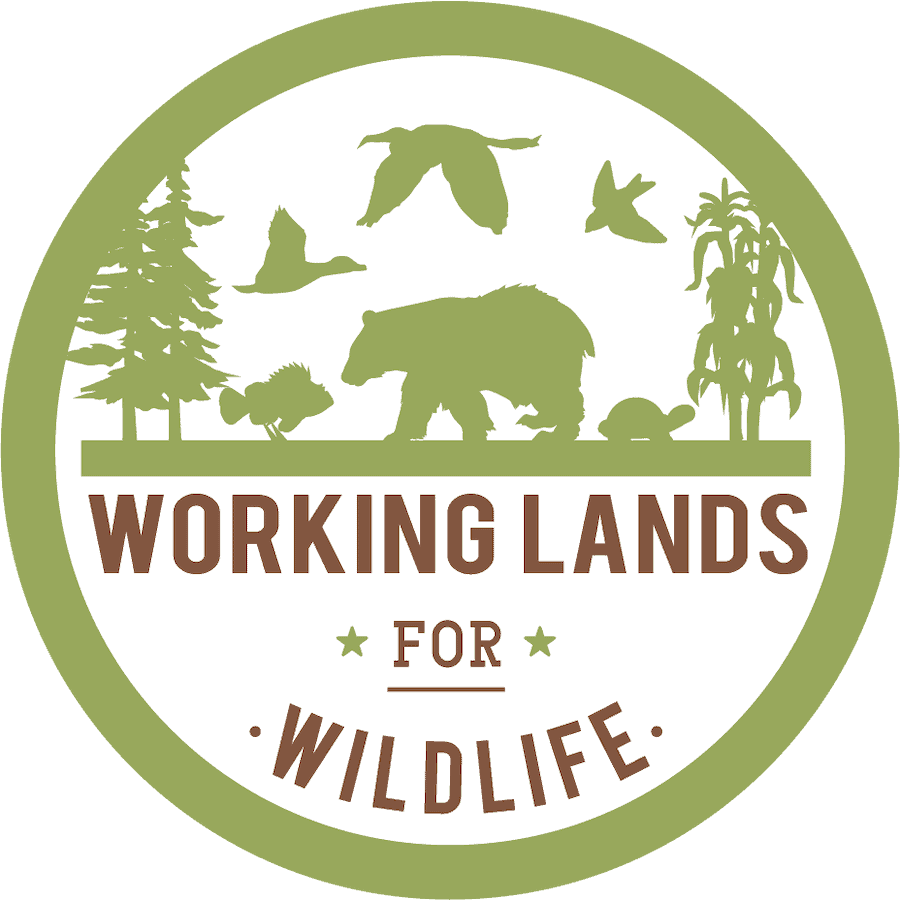-
 Quail habitat also protects threatened orchid species in Tennessee
Quail habitat also protects threatened orchid species in Tennessee
-
by
Rachel Holt
—
published
May 26, 2025
—
last modified
May 27, 2025 01:39 PM
—
filed under:
WLFW,
Northern Bobwhite Quail,
Grasslands and Savannas,
Orchid,
Working Lands for Wildlife,
Tennessee,
Northern Bobwhite Quail, Grasslands & Savannas
Two rare species were recently found on working lands in Van Buren County
Located in
Stories
-
 Reconnecting Cattle and Quail
Reconnecting Cattle and Quail
-
by
Admin
—
published
May 06, 2021
—
filed under:
WLFW,
Livestock,
Northern Bobwhite Quail,
Instructional Video,
Landowners,
Video,
Cattle,
Working Lands for Wildlife,
Landowner Information,
Grazing,
Native Grasslands
Learn about the Working Lands for Wildlife program and work in Ohio between USDA-NRCS and local farmers and ranchers. Grazing cattle on warm season, native grasses is great for cattle as well as critical species like the Northern Bobwhite Quail. Video for landowners and cattle producers.
Presented by Nick Schell (USDA-NRCS Ohio) and Dr. Pat Keyser (UT - Center for Native Grasslands Management) at the Ohio Forage and Grassland Council Conference in 2017.
Located in
Learning & Tech Transfer
/
Webinars & Videos
-
 Regenerative Agriculture: No-Till Farming
Regenerative Agriculture: No-Till Farming
-
by
Admin
—
published
Dec 30, 2020
—
last modified
Apr 21, 2023 02:04 PM
—
filed under:
Regenerative Agriculture,
Climate Impacts,
WLFW,
Livestock,
Webinars and Instructional Videos,
Northern Bobwhite Quail,
Training Resources,
Video,
Working Lands for Wildlife,
Grasslands and Savannas,
Ranching,
Farming,
Agriculture,
Grazing
Gabe Brown, legendary Rancher from Bismarck, North Dakota, discusses how Regenerative Agriculture is a solution to local and global challenges.
Located in
Training Resources
/
Webinars and Instructional Videos
-
 Residue & Tillage Management for Wildlife (KY)
Residue & Tillage Management for Wildlife (KY)
-
by
Bridgett Costanzo
—
published
Mar 12, 2021
—
last modified
Apr 21, 2023 12:12 AM
—
filed under:
Information,
WLFW,
wildilfe,
Northern Bobwhite Quail,
cropland,
job sheet,
till,
tillage,
NRCS,
Grasslands and Savannas,
Working Lands for Wildlife,
NRCS Conservation Practices & Materials,
Job Sheets
Job sheet
Located in
Information
/
NRCS Conservation Practices & Materials
/
Job Sheets
-
 Silvopasture Establishment in Pine (AL)
Silvopasture Establishment in Pine (AL)
-
by
Bridgett Costanzo
—
published
Mar 12, 2021
—
last modified
Apr 21, 2023 12:08 AM
—
filed under:
Information,
WLFW,
silvopasture,
Northern Bobwhite Quail,
Pine,
Job Sheets,
NRCS,
Grasslands and Savannas,
Working Lands for Wildlife,
NRCS Conservation Practices & Materials,
grazing
Job sheet
Located in
Information
/
NRCS Conservation Practices & Materials
/
Job Sheets
-
 South Carolina Priority Area Shapefile
South Carolina Priority Area Shapefile
-
by
Sage Voorhees
—
published
Mar 05, 2022
—
last modified
Apr 20, 2023 10:53 PM
—
filed under:
Information,
WLFW,
Northern Bobwhite Quail,
Boundaries & Priority Area Shapefiles,
Southeast,
Maps and Spatial Data,
South Carolina,
Grasslands and Savannas,
Working Lands for Wildlife
Northern Bobwhite Partnership Priority Area 2022-2026
Located in
Information
/
…
/
Boundaries & Priority Area Shapefiles
/
Southeast
-
 State Priority Areas for WLFW NOBO, Grasslands, and Savannas
State Priority Areas for WLFW NOBO, Grasslands, and Savannas
-
by
Bridgett Costanzo
—
published
Mar 07, 2022
—
last modified
Apr 20, 2023 11:57 PM
—
filed under:
Information,
WLFW,
Grasslands,
NOBO,
Northern Bobwhite Quail,
Boundaries & Priority Area Shapefiles,
framework,
Savannas,
Maps and Spatial Data,
Grasslands and Savannas,
Working Lands for Wildlife,
priority areas,
National,
Northern bobwhite
Beyond the national boundaries that each NRCS state offices selected, some chose to also identify priority areas that will be used in project ranking. (priority area shapefiles not uploaded yet!)
Located in
Information
/
…
/
Boundaries & Priority Area Shapefiles
/
National
-
 Supplemental planting for quail
Supplemental planting for quail
-
by
Web Editor
—
published
Feb 22, 2021
—
last modified
Apr 21, 2023 02:22 PM
—
filed under:
Training Resources,
WLFW,
Webinars and Instructional Videos,
Northern Bobwhite Quail,
Bobwhite Quail Seminar Series,
Video,
Grasslands and Savannas,
South Carolina Bobwhite Initiative,
Working Lands for Wildlife
Food plots can be helpful for bobwhites but only if they're done properly. Marion Barnes of Clemson Extension talks about what to plant, where to plant it and when to put it in the ground to get the most benefits.
Located in
Training Resources
/
Webinars and Instructional Videos
/
Bobwhite Quail Seminar Series
-
 Tennessee Priority Area Shapefiles
Tennessee Priority Area Shapefiles
-
by
Sage Voorhees
—
published
Mar 05, 2022
—
last modified
Apr 20, 2023 10:57 PM
—
filed under:
Information,
WLFW,
Northern Bobwhite Quail,
Boundaries & Priority Area Shapefiles,
Southeast,
Tennessee,
Maps and Spatial Data,
Grasslands and Savannas,
Working Lands for Wildlife
Northern Bobwhite Priority Areas, Northern Bobwhite Grasslands and Savannas Partnership 2022-2026
Located in
Information
/
…
/
Boundaries & Priority Area Shapefiles
/
Southeast
-
 Texas Priority Area Shapefiles
Texas Priority Area Shapefiles
-
by
Sage Voorhees
—
published
Mar 05, 2022
—
filed under:
Central,
Northern Bobwhite Quail,
Texas
Northern Bobwhite Quail Partnership 2022-2026 Prioirty Area
Located in
Information
/
…
/
Boundaries & Priority Area Shapefiles
/
Central Region


